At 87m high, the belltower of the Gothic Cathédrale Notre-Dame in Rodez is a landmark for miles around. At the very centre of the town, the cathedral is striking for its pink sandstone, multiple towers and gargoyles. We visited on Sunday after looking around the Musée Soulages, a contrasting contemporary building of weathered steel. I find the contrast works.
The old town of Rodez sits on a hilltop overlooking the deep gorge of the River Aveyron. Medieval buildings stand side by side with 16th– and 17th-century merchants’ residences. The more modern part of Rodez sprawls down the sides of the hill.
For much of the Middle Ages, the town was partitioned between the bishops, who ran the North side, and the counts of Rodez, who governed the South side. Each side had its own walls. Woe betide you if you didn’t return to your side of the town before the gates clanged shut for the nightly curfew.
Successive cathedrals
A cathedral church existed on roughly the same spot from the 5th century. Successive bishops embellished parts of it, but the original church tower and choir roof collapsed in February 1276. This must have seemed like a catastrophe to the Ruthénois (name for citizens of Rodez).
However, the construction of a new cathedral quickly began in 1277. The work took three centuries to complete, hampered by the plague and the Hundred Years War. I’m always amazed at what medieval builders were able to achieve without the benefit of modern equipment. The sheer scale of these buildings is breathtaking.
Former fortress
Unusually, the West front, which faces you when you approach via Avenue Victor-Hugo, has no entrance and only narrow slit windows at the lower level. This is because it once formed part of the city’s defensive walls. Instead, the entrances are on the North and South sides.
The two towers that flank the West front remain incomplete. Despite this, the cathedral retains a unity of style, except for the North bell tower, a more elaborate mixture of Flamboyant Gothic and Renaissance styles.
The South side has a wonderful array of gargoyles and chimères. I counted about 14 in my shot below.
The North bell tower, with its delicate tracery stonework, was the vision of Bishop François d’Estaing in the 16th century after the previous one burned down. He wanted it to be ‘le plus beau et le plus haut’ (the most beautiful and the tallest). It remains one of the tallest in France.
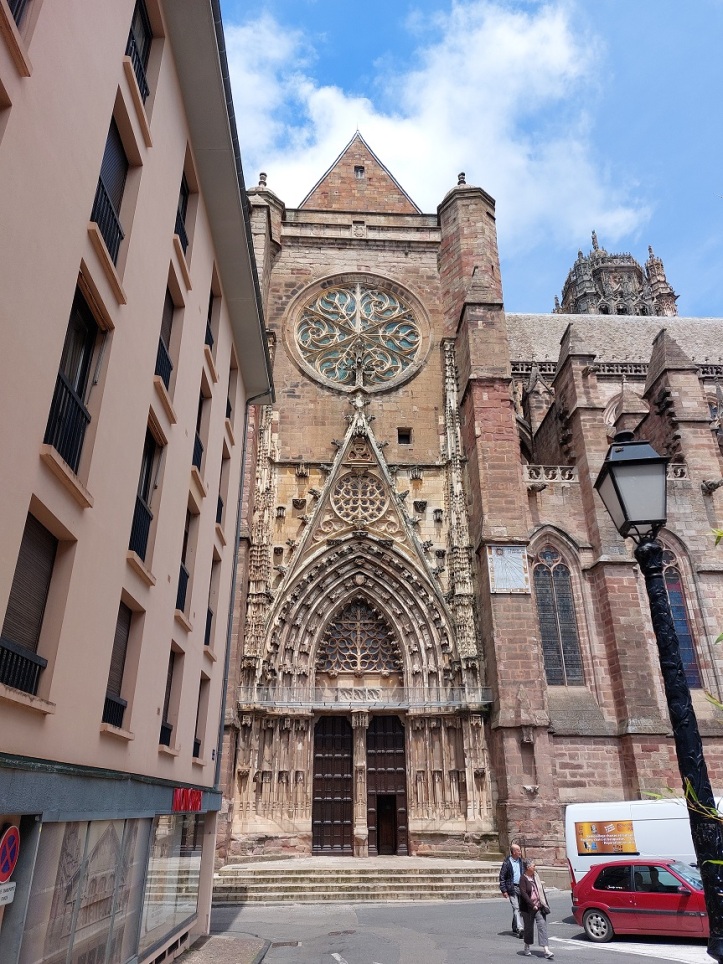
Interior
When you enter by the South door, the massive organ faces you. The instrument was inaugurated in 1986 following reconstruction work, after the previous version had become virtually unplayable.
If you turn around and look back at the South door, you see the 15th-century rood screen that originally stood around the choir and was rebuilt around the door in the 19th century.
Intriguing carvings
I was particularly interested to look at the choir stalls, where the clergy stood or sat during the services. The arms present carved heads, which centuries of hands have polished to a smooth patina.
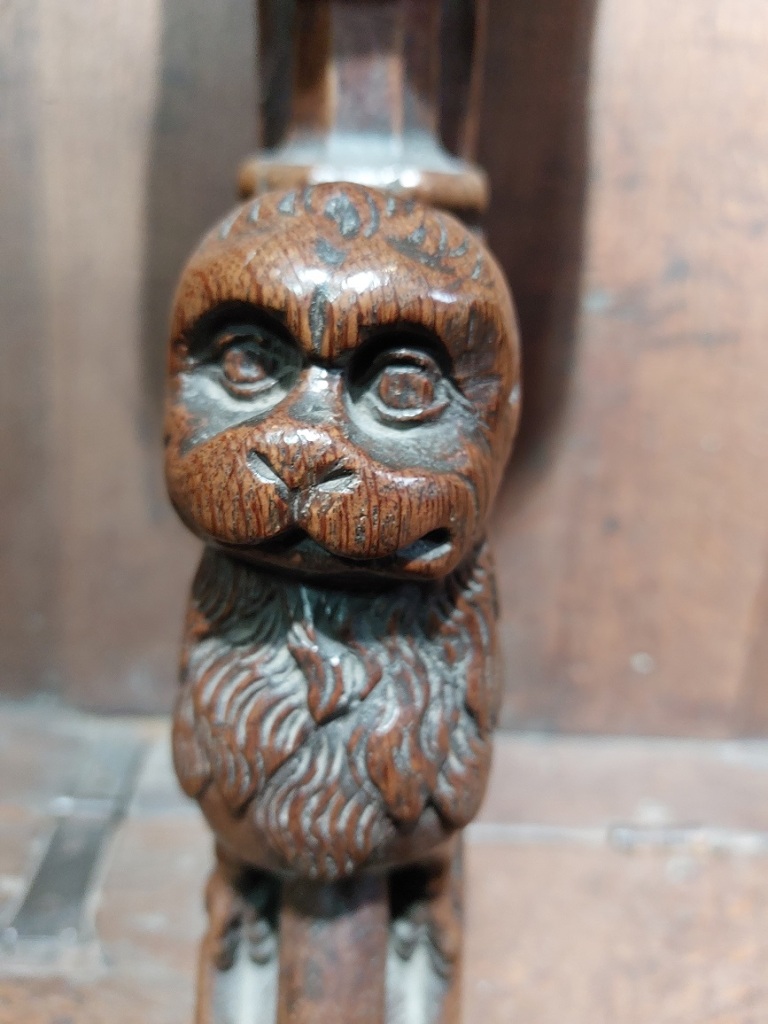
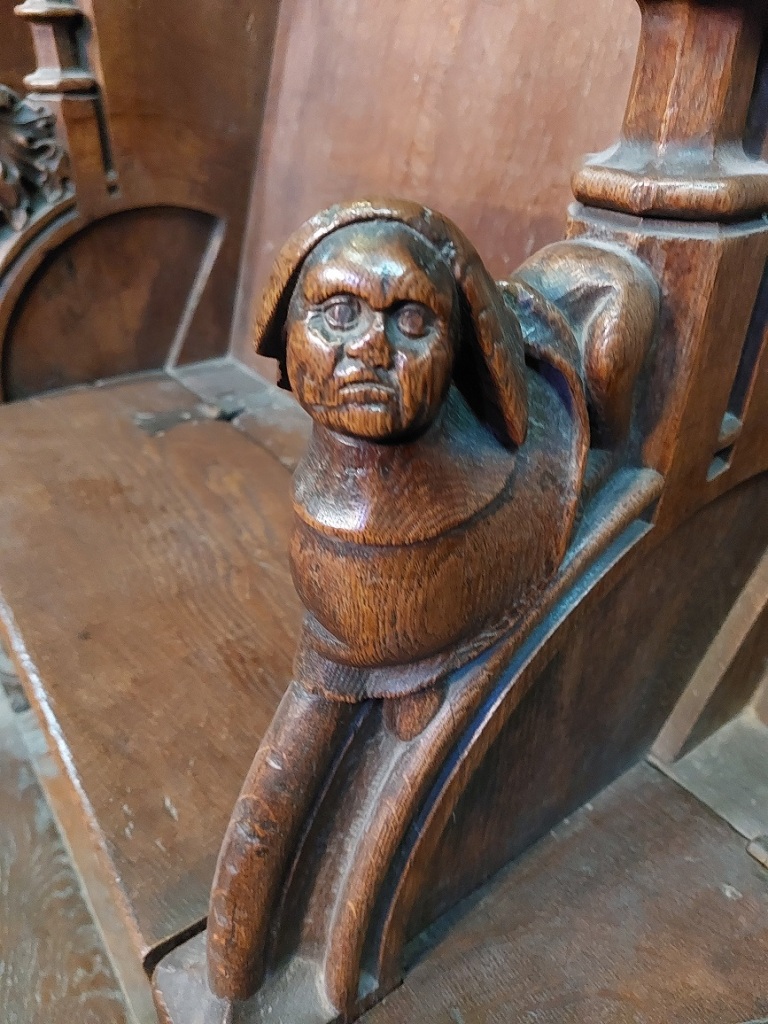
Beneath the folding seats you find misericords (wooden perching seats) with carved sculptures. They are supposed to depict Biblical scenes. A few are more profane. They are the work of the studio of the expert sculptor André Sulpice, between 1478 and 1488. He also produced the ones in the Collégiale Notre-Dame in Villefranche.
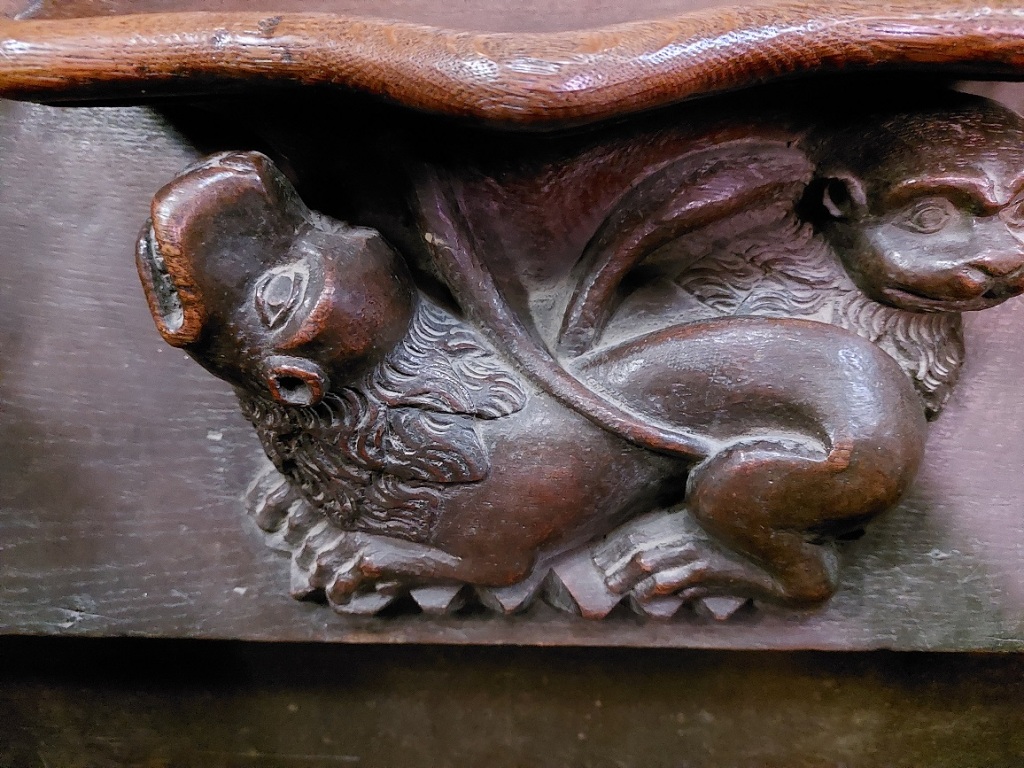
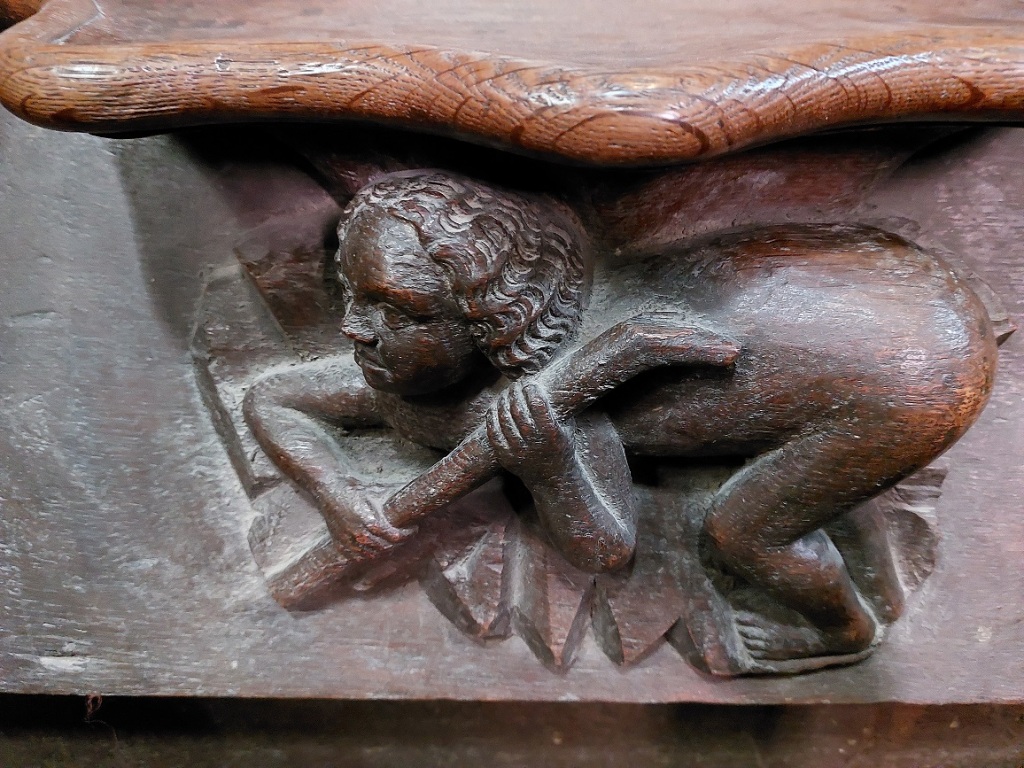
There’s plenty more to see inside the cathedral. You can take a guided tour of the bell tower, all 400 steps of it! Modern stained glass windows by the artist Stéphane Belzère complement the older windows. And there are a number of side chapels to explore. By this time, however, we were getting weary, so we decided to do a quick anti-clockwise tour of the exterior.
Maison Benoît
One final sight grabbed my attention. In the tiny Place d’Estaing beneath the cathedral’s East front, a vaulted passageway beckoned me into an internal courtyard.
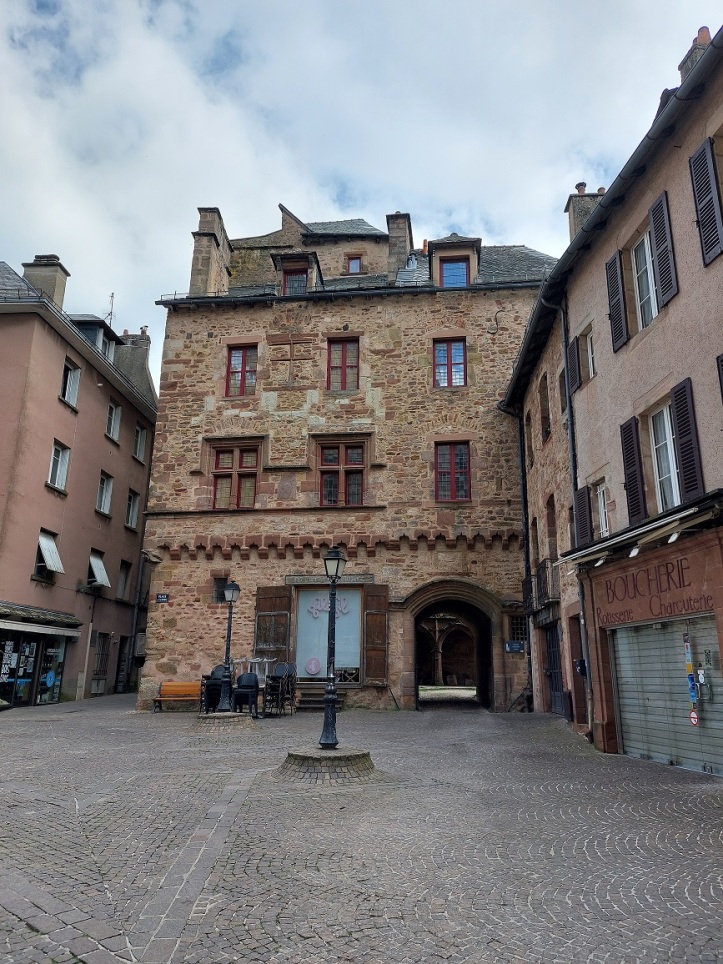
This belongs to the Maison de Benoît, built in the late 15th century. As it is privately owned, you can’t go in, but you can admire the tower and the Gothic gargoyles.
After that, it was time to turn for home. We have resolved to go back, since our Musée Soulages tickets also give entry until November to le Musée Denys-Puech (fine arts) and le Musée Fenaille (prehistoric standing stones and medieval and Renaissance treasures). And we have plenty of exploring to do around the old town.
You might also like these related posts:
Copyright © Life on La Lune 2024. All rights reserved.
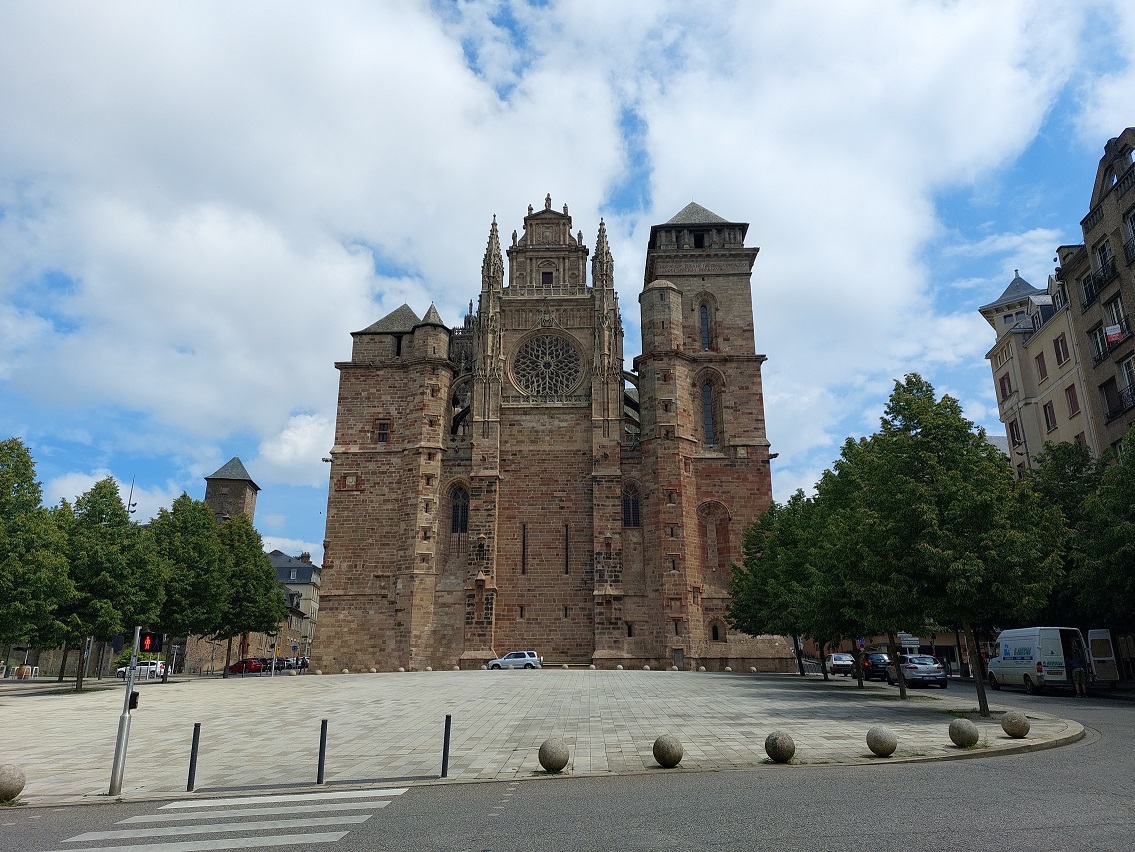
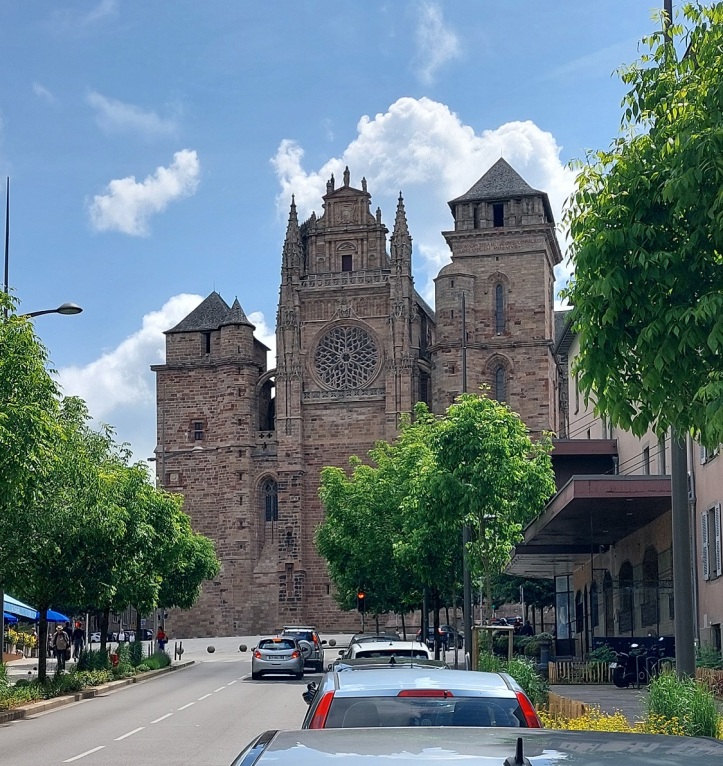
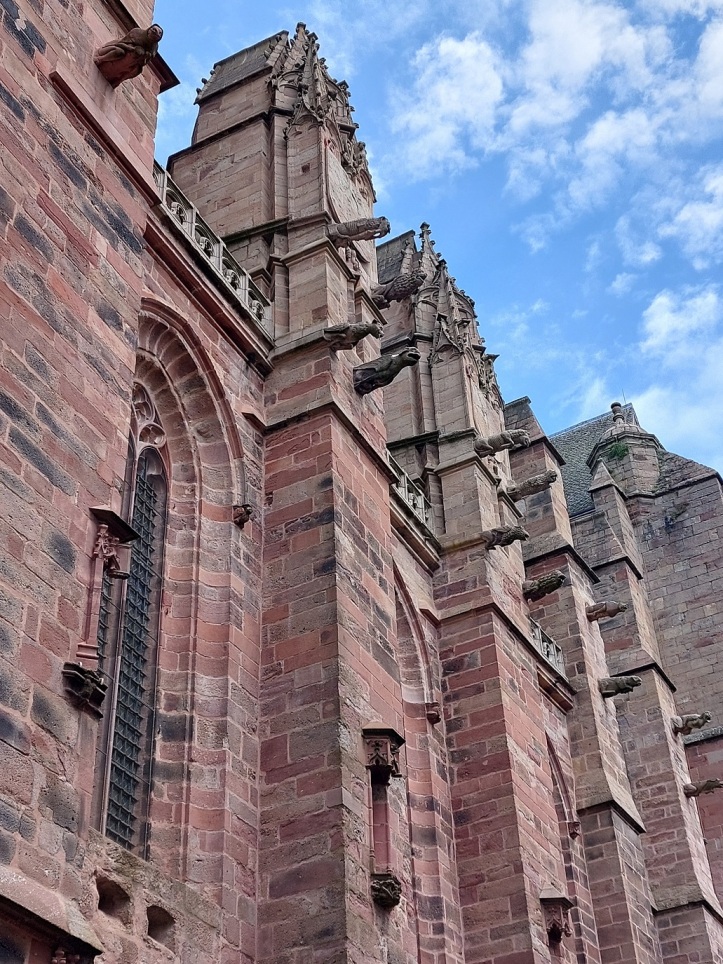

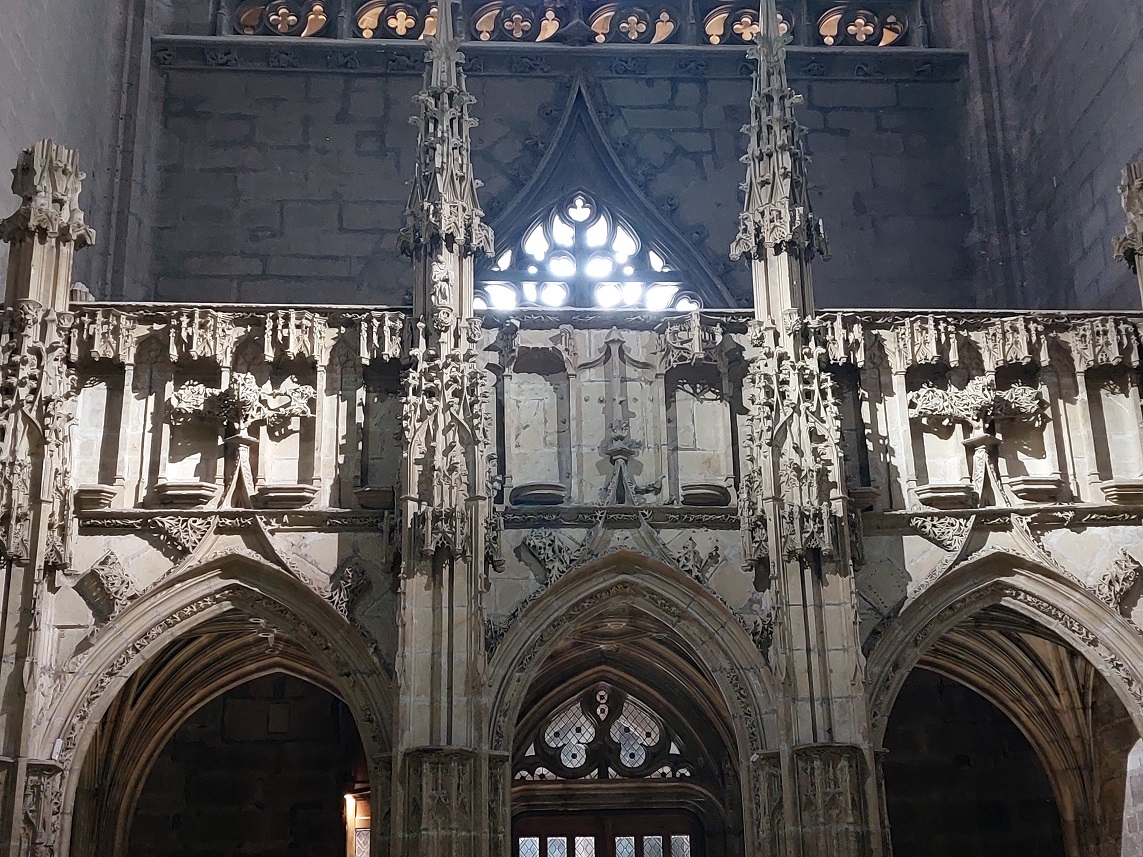
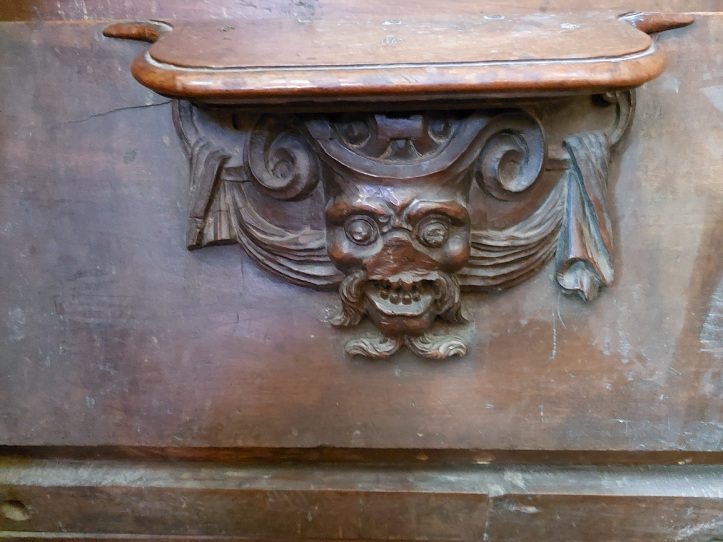
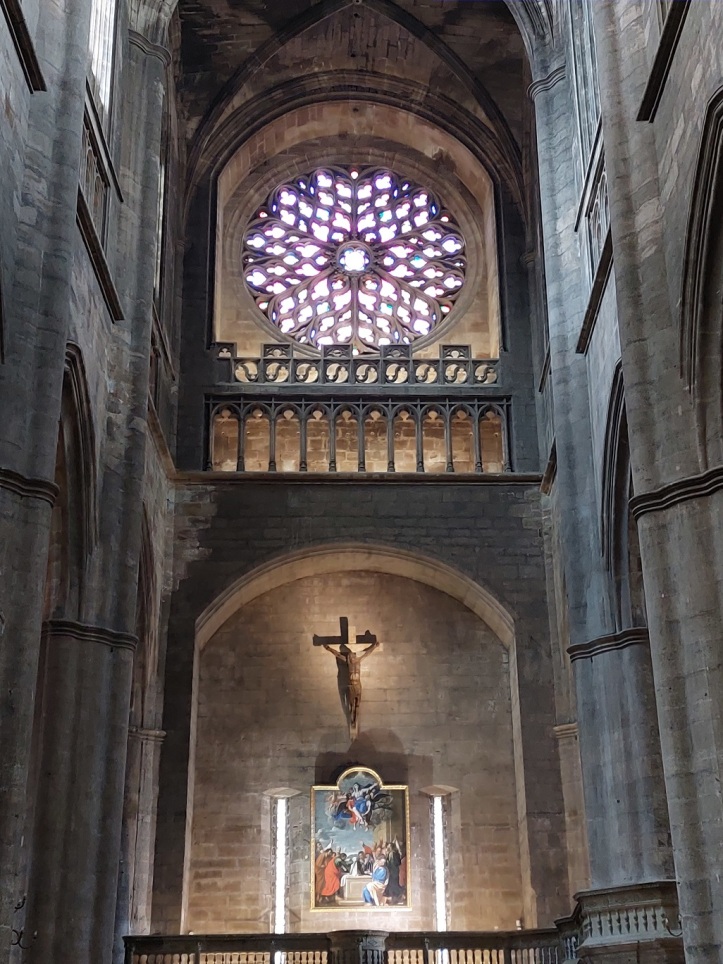
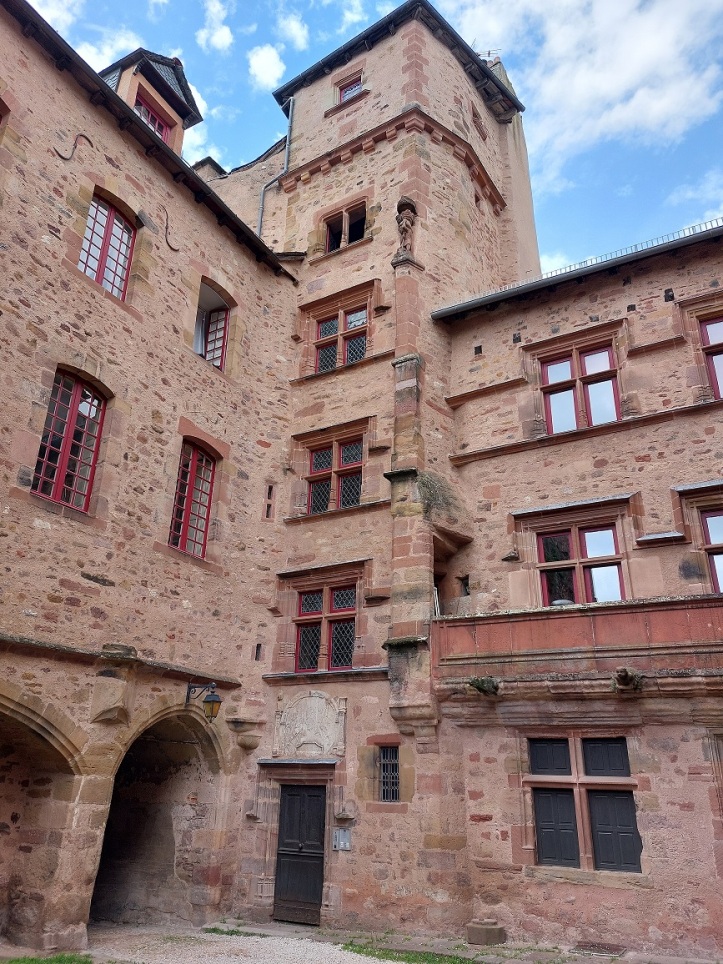
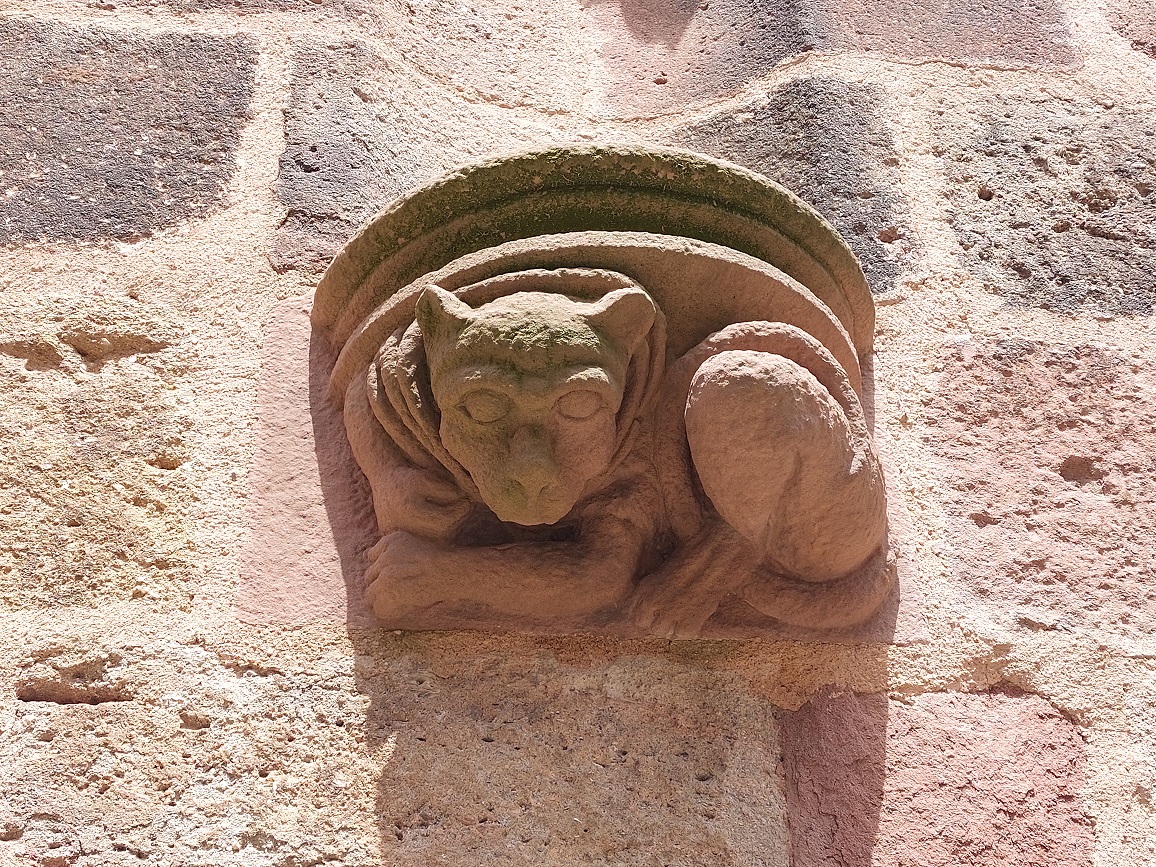
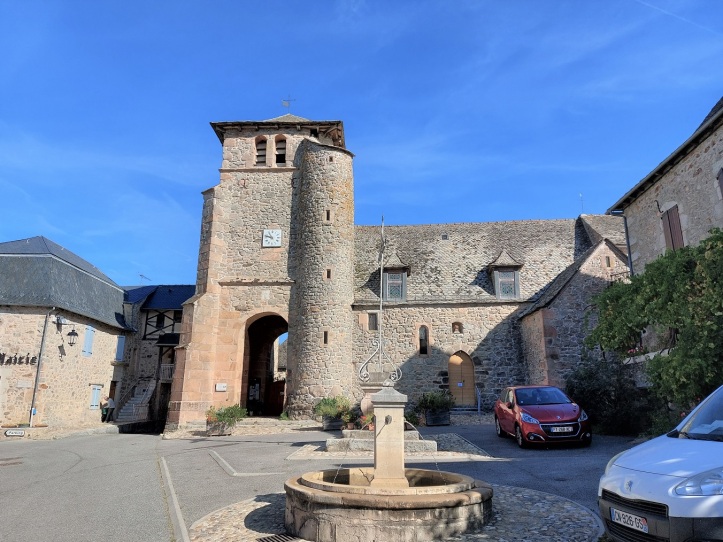
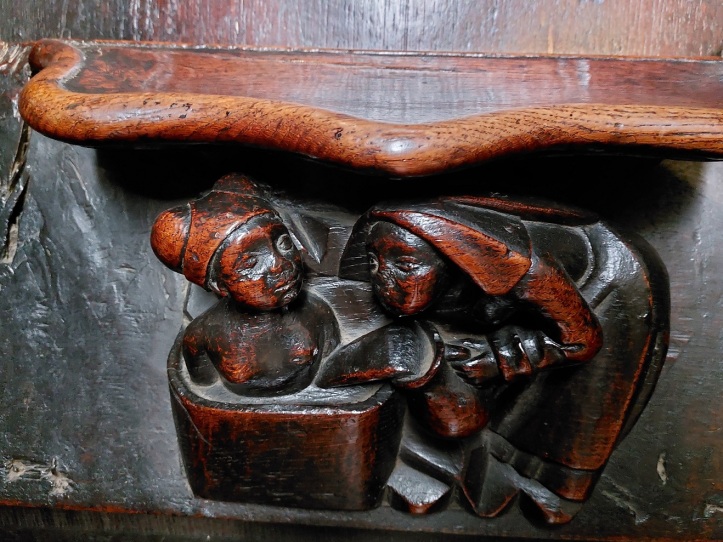
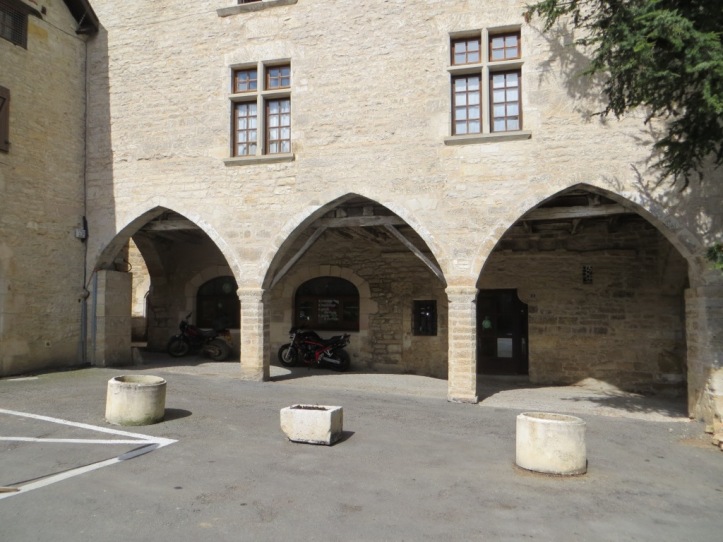
Dear Vanessa,
another very interesting and informative article on a town I haven’t had the good fortune to visit…..yet!As others have commented,that pink sandstone is a lovely material and I recall how good some of the buildings looked in Montauban both when in the sun but also after a rain shower,to the different light levels.
I was in Brittany a couple of months ago and noticed that the impressive cathedral in Dol de Bretagne was also “unfinished”but nevertheless equally impressive.
Prefer the pink sandstone to the grey granite though
best wishes
Stuart
LikeLiked by 1 person
It’s a shame that we have managed to get to Rodez only twice in 27 years, but we are firmly resolved to return, as there is much more to see.
Montauban is known as “the pinkest of the pink cities”, compared with Albi and Toulouse. I agree about grey granite, especially in the rain!
Best wishes, Vanessa
LikeLike
Fabulous buildings – I can feel that this would be at least one overnight stop for us!!
LikeLiked by 1 person
Yes, definitely. We intend to return, since there’s a lot we didn’t see.
LikeLiked by 1 person
The pink cathedral is imposing in your photos. I would love to see it in the ‘flesh’ if that expression can be used with buildings!
LikeLiked by 1 person
Pink-fleshed buildings! I love the idea of that. It is very impressive and remarkable for its state of preservation, which is no doubt a constant and costly process. It is definitely worth a visit if you’re in the area.
LikeLiked by 1 person
Beautiful visit – thank you
LikeLiked by 1 person
Thank you. I’m pleased you enjoyed it.
LikeLiked by 1 person
😎
LikeLike